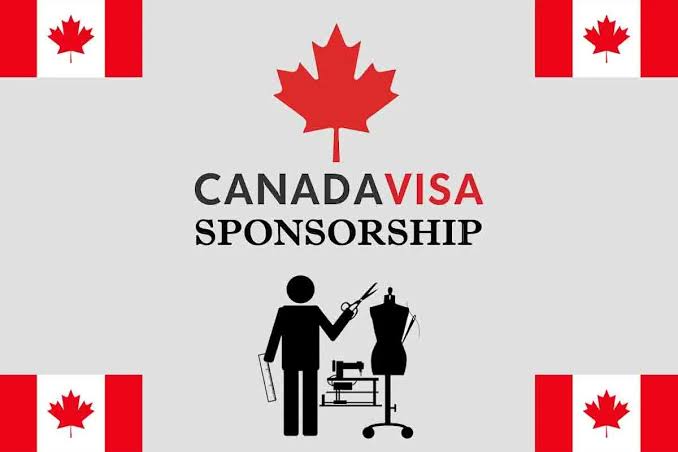With the expansion of Canada’s food service sector, cafeterias have become essential in offering affordable and convenient meals across a variety of locations such as schools, hospitals, corporate offices, and other institutions.
The increasing need for reliable cafeteria staff has led many employers to recruit internationally, providing visa sponsorship to fill these roles with skilled candidates from abroad. This offers a valuable entry point for foreign workers into Canada’s job market in 2025.
Review the main duties of cafeteria workers, necessary qualifications, companies offering visa sponsorship, steps for applying, and details about the visa process. Cafeteria roles offer international workers a pathway into Canada’s food industry, with the potential for career stability and long-term residency options.
By following these steps, you can start your journey toward living and working in Canada.
A Look at Careers in Cafeteria Work
Cafeteria workers are crucial to the daily operations of dining facilities within schools, hospitals, universities, and business complexes. They handle food preparation, assist customers, and ensure a clean, safe environment. This fast-paced role requires teamwork and efficiency, with many jobs involving long periods of standing and lifting kitchen items. As Canada’s institutions grow, the need for cafeteria staff has surged, and many employers are extending visa sponsorship to qualified international candidates.
Essential Responsibilities of Cafeteria Workers
Cafeteria roles vary depending on the institution, but typical responsibilities include:
- Food Preparation: Assisting in the preparation of basic meals, such as sandwiches, salads, and soups.
- Customer Service: Addressing customer needs, handling transactions, and ensuring a positive dining experience.
- Serving Food: Distributing meals with attention to portion size and food quality.
- Cleaning and Sanitizing: Maintaining cleanliness in the kitchen and dining areas, washing utensils, and sanitizing surfaces.
- Restocking Supplies: Ensuring food items, beverages, and other supplies are regularly replenished.
- Health and Safety Compliance: Following food safety protocols to keep the environment safe and clean.
These roles are physically demanding and require stamina, as the job involves standing for extended periods and operating kitchen equipment.
Requirements for Working as a Cafeteria Worker in Canada
To be eligible for a cafeteria worker position with visa sponsorship in Canada, candidates generally need to meet the following requirements:
- Educational Background: Most positions require a high school diploma or equivalent. Food safety certifications, which can be obtained in Canada or abroad, may also be required.
- Experience: Previous experience in food service is helpful, though many employers provide training for entry-level staff.
- Language Skills: Proficiency in English is typically needed, and French may be beneficial in certain regions.
- Physical Fitness: As the job often involves standing and using kitchen equipment, physical stamina is important.
- Work Permit Eligibility: International applicants must be eligible for a Canadian work permit, with employers willing to offer visa sponsorship.
Top Employers Recruiting Cafeteria Workers with Visa Sponsorship
Several Canadian organizations in schools, hospitals, and corporate offices hire cafeteria workers and provide visa sponsorship for qualified candidates:
- Aramark Canada
- Provides food services and facilities management in educational, healthcare, and corporate settings. They frequently hire cafeteria staff and offer sponsorship for foreign applicants.
- Compass Group Canada
- A leading food service provider for healthcare, educational, and corporate institutions. They regularly recruit cafeteria workers and may offer visa sponsorship.
- Chartwells
- A division of Compass Group specializing in school and university dining services. They often hire cafeteria workers with sponsorship opportunities for qualified candidates.
Visa Sponsorship and Application Process
International applicants can follow these steps to secure a cafeteria worker position in Canada with visa sponsorship:
- Receive a Job Offer: Obtain an official offer from a Canadian employer willing to sponsor your visa.
- Labor Market Impact Assessment (LMIA): The employer may need an LMIA, proving a need for foreign workers to fill the role. Once approved, they can sponsor you.
- Apply for a Work Permit: After a positive LMIA, submit your work permit application with your job offer and personal documents, along with medical and background checks.
- Visa Issuance: Upon approval, receive your work permit, allowing you to work in Canada as a cafeteria worker.
- Pathways to Permanent Residency: After gaining experience, you may be eligible for permanent residency through programs such as the Canadian Experience Class (CEC) or the Provincial Nominee Program (PNP).
Steps for Applying for Cafeteria Jobs in Canada
If you’re interested in working as a cafeteria worker in Canada, follow these steps:
- You can apply by emailing your applicatc licking the “Apply” button on this page. After submission, our team will thoroughly review your profile to connect you with opportunities that align with your skills and qualifications. Your application will then be directed to the appropriate institution for further assessment. The process is entirely free, and no charges will be applied at any stage.
Frequently Asked Questions
- What is the typical salary for cafeteria workers in Canada?
- Salaries generally range from CAD 26,000 to CAD 40,000 annually, depending on location and employer. Full-time positions may offer benefits and overtime.
- Is there a high demand for cafeteria workers in Canada?
- Yes, demand is steady across schools, hospitals, and large corporate sites.
- Do I need prior experience to apply for a cafeteria worker position?
- While previous experience is helpful, many employers are open to training new hires.
- Can I apply for permanent residency after working as a cafeteria worker?
- Yes, many workers gain eligibility for permanent residency through experience, using programs like the CEC or PNP.
- How long does the visa sponsorship process take?
- The process may take a few months, based on LMIA processing and work permit application timeframes.
This opportunity provides a stepping stone into Canada’s thriving food service sector, offering not only stable employment but also a potential path to permanent residency for dedicated workers.




